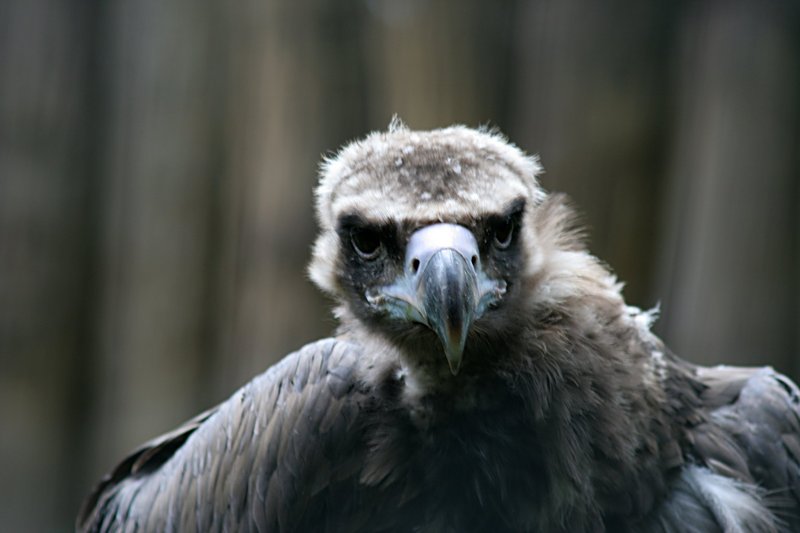Eurasian Black Vulture, Cinereous Vulture (Aegypius monachus) - Wiki Eurasian Black Vulture
From Wikipedia, the free encyclopedia
[Photo] Eurasian Black Vulture at Zoo Praha. photo: che http://commons.wikimedia.org/wiki/User:Che
The Eurasian Black Vulture (Aegypius monachus) is also known as the Monk Vulture, the Cinereous Vulture, or just the Black Vulture. It is a member of the family Accipitridae which also includes many other diurnal raptors such as kites, buzzards and harriers.
This bird is an Old World vulture, and is not related to the New World vultures which are in a separate family Cathartidae. It is therefore also unrelated to the American Black Vulture despite the similar name and coloration.
It breeds across southern Europe and Asia from Spain to Japan, but is endangered throughout its European range. It is resident except in those parts of its range where hard winters cause limited movement.
It is the largest bird of prey (Falconiformes) in the world (as the unrelated, slightly larger Andean Condor is now affiliated with the Ciconiiformes). This huge bird is 110-120 cm (43-48 inches) long with a 250-300 cm (8-10 foot) wingspan and a body mass of up to 14 kg (31 lbs.). It breeds in high mountains and large forests, nesting in trees. It has all dark plumage, and even at a distance can be distinguished from Griffon Vulture by its evenly broad "barn door" wings. It has the typical vulture "bald" head, and dark markings around the eye give it a menacing skull like appearance.
The Eurasian Black Vulture is usually larger than Griffon Vulture. Among the vultures in its range, the Eurasian Black Vulture is best equipped to tear open tough carcass skins, ably using its powerful bill. It dominates all other vultures at carcasses.
http://en.wikipedia.org/wiki/Eurasian_Black_Vulture
| The text in this page is based on the copyrighted Wikipedia article shown in above URL. It is used under the GNU Free Documentation License. You may redistribute it, verbatim or modified, providing that you comply with the terms of the GFDL. |
